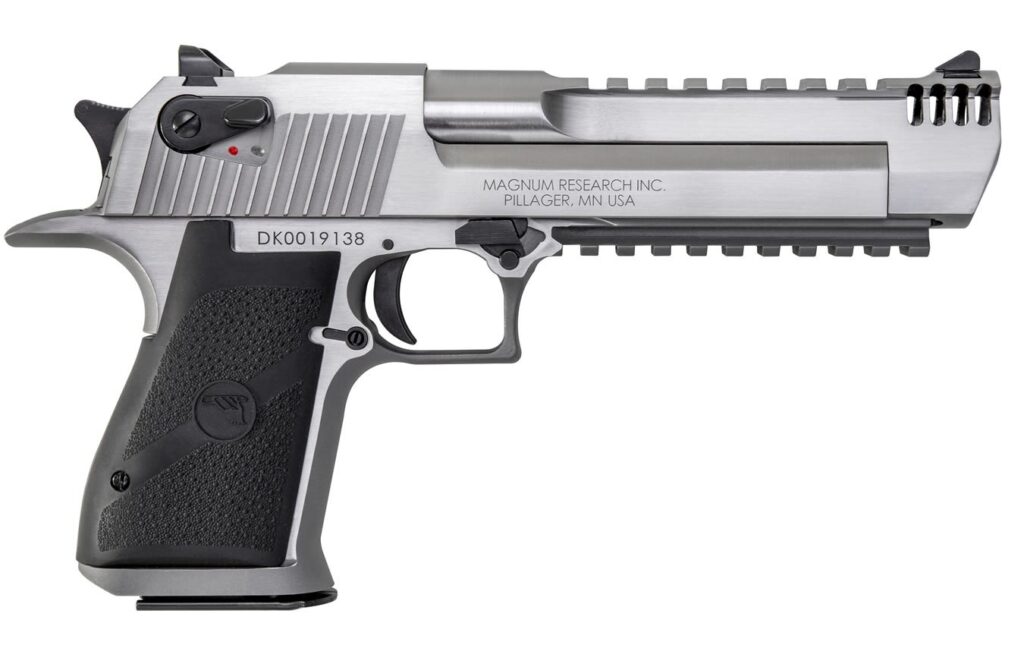
The .357 Automatic Pistol: A Deep Dive into a Controversial Firearm
The concept of a .357 automatic pistol has intrigued and perplexed firearm enthusiasts for decades. While the .357 Magnum revolver cartridge is renowned for its stopping power and effectiveness, adapting it to a semi-automatic platform presents significant engineering challenges. This article explores the history, design considerations, and potential of the .357 automatic pistol, examining why it remains a relatively rare and controversial firearm.
The Allure of a High-Powered Automatic
The appeal of a .357 automatic pistol lies in the desire for a high-capacity, rapidly firing handgun chambered in a potent cartridge. The .357 Magnum boasts impressive ballistics, making it a popular choice for self-defense, hunting, and law enforcement. Combining this power with the semi-automatic action’s faster follow-up shots and higher magazine capacity compared to a revolver seems like a natural progression. However, several factors have hindered the widespread adoption of this concept.
Engineering Hurdles: Taming the .357 Magnum
The primary obstacle in creating a reliable .357 automatic pistol is managing the cartridge’s high pressure. The .357 Magnum generates significantly more pressure than common automatic pistol cartridges like 9mm or .45 ACP. This necessitates a robust and carefully designed firearm to safely handle the recoil and prevent malfunctions. Several approaches have been explored, each with its own set of advantages and disadvantages.
Recoil Management
One of the biggest challenges is recoil management. The powerful recoil of the .357 Magnum can make controlling a lightweight automatic pistol difficult, leading to reduced accuracy and potentially causing discomfort for the shooter. Designs must incorporate effective recoil mitigation techniques such as heavier slides, advanced recoil springs, and muzzle brakes to tame the .357 automatic pistol.
Locking Mechanisms
The locking mechanism is critical for safely containing the high pressures generated by the .357 Magnum. Traditional tilting-barrel designs, common in many semi-automatic pistols, may not be sufficient for this cartridge. More robust locking systems, such as rotating barrels or delayed blowback mechanisms, are often necessary to ensure safe and reliable operation of a .357 automatic pistol.
Feeding and Extraction
Reliable feeding and extraction are essential for any semi-automatic firearm. The .357 Magnum’s rimmed cartridge design can sometimes pose challenges for smooth feeding from a magazine. Careful attention must be paid to magazine design and feed ramp geometry to ensure consistent and reliable feeding of the .357 automatic pistol.
Notable Attempts at the .357 Automatic Pistol
Despite the engineering challenges, several manufacturers have attempted to produce a viable .357 automatic pistol. While none have achieved widespread success, these attempts offer valuable insights into the complexities of this design.
The Desert Eagle
Perhaps the most well-known attempt is the Desert Eagle, manufactured by Magnum Research. While primarily chambered in larger calibers like .50 AE and .44 Magnum, the Desert Eagle has also been offered in .357 Magnum. Its gas-operated rotating bolt mechanism is designed to handle high-pressure cartridges, but the Desert Eagle’s large size and weight make it less practical for concealed carry or everyday use. It is more of a novelty or range toy than a practical defensive firearm. The Desert Eagle in .357 automatic pistol configuration remains a niche product.
Other Prototypes and Concepts
Other manufacturers have experimented with .357 automatic pistol designs, but few have progressed beyond the prototype stage. The high cost of development, coupled with the limited market demand, has discouraged widespread production. Many designs struggle with reliability issues, particularly with feeding and extraction, further hindering their commercial viability. The challenges associated with creating a reliable .357 automatic pistol are significant.
The Future of the .357 Automatic Pistol
The future of the .357 automatic pistol remains uncertain. Advancements in materials science and manufacturing techniques may eventually lead to more reliable and practical designs. However, the inherent challenges of taming the .357 Magnum in a semi-automatic platform are unlikely to disappear entirely. The development of new recoil mitigation technologies could also play a role in making the .357 automatic pistol more manageable.
Alternatives and Considerations
For those seeking a high-powered handgun, there are alternatives to the .357 automatic pistol. Modern 10mm pistols offer comparable ballistics in a semi-automatic platform, with less recoil and greater magazine capacity than a .357 Magnum revolver. The 10mm Auto cartridge provides a potent combination of power and controllability, making it a popular choice for self-defense and hunting. The .357 SIG cartridge is another option, designed to approximate the ballistics of the .357 Magnum in a bottlenecked cartridge suitable for semi-automatic pistols. [See also: 10mm vs .357 Magnum: A Ballistic Comparison]
Ultimately, the decision of whether to pursue a .357 automatic pistol depends on individual priorities and preferences. While the concept holds theoretical appeal, the practical challenges and available alternatives suggest that it may remain a niche product for the foreseeable future. The rarity of a functional and reliable .357 automatic pistol speaks volumes about the difficulties involved in its creation.
Conclusion: A Niche Firearm with Lasting Appeal
The .357 automatic pistol represents a fascinating intersection of power and engineering challenge. While its limited adoption reflects the difficulties in taming the .357 Magnum cartridge in a semi-automatic platform, the allure of a high-capacity, rapidly firing handgun chambered in such a potent round continues to captivate firearm enthusiasts. Whether future innovations will overcome the remaining hurdles remains to be seen, but the story of the .357 automatic pistol serves as a testament to the ingenuity and persistence of firearms designers.
Despite its rarity, the .357 automatic pistol holds a unique place in firearms history. Its existence, even in limited numbers, demonstrates the constant pursuit of increased power and efficiency in handgun design. The challenges overcome, and those that remain, offer valuable lessons for future firearms development. The .357 automatic pistol, while not a mainstream firearm, continues to intrigue and inspire.
